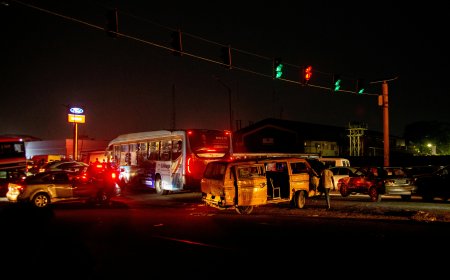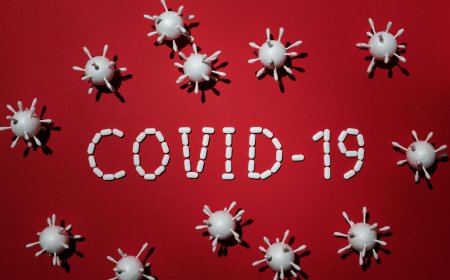India’s Top Court Restores Stray Dogs’ Right to Roam
India’s Supreme Court rules in favor of stray dogs, granting over a million in New Delhi the right to roam freely after years of legal battle.

In the bustling streets of India’s capital, stray dogs have long been part of the city’s fabric. They dart between traffic, doze under tea stalls, and follow food vendors in search of scraps. Now, more than one million strays in New Delhi have won a historic legal battle: the Supreme Court of India has reaffirmed their right to roam freely.
For years, a heated debate has simmered between residents who view the dogs as a public menace and animal advocates who see them as sentient beings deserving dignity. The Court’s ruling not only settles a divisive legal fight but also reignites broader questions about how societies coexist with animals in urban spaces.
How the Stray Dog Battle Began
India’s stray population, estimated at over 60 million nationwide, is the largest in the world. Nowhere is this more visible than in Delhi, where every street corner hosts a pack of dogs.
Complaints from residents — citing dog bites, rabies risks, and nighttime barking — led to petitions calling for stricter controls, even mass culling. Animal welfare groups countered, arguing that the Animal Birth Control Act protects street dogs and mandates sterilization over killing.
The conflict escalated into a protracted legal fight, reaching India’s highest court. After months of hearings, the judges sided with animal rights advocates, ruling that strays must be treated with compassion and allowed to exist in their natural habitats.
The Supreme Court’s Ruling Explained
The judgment has three key elements:
- Recognition of rights: Stray dogs have the right to live without harm or displacement.
- Community responsibility: Citizens are encouraged to feed and care for neighborhood dogs in designated areas.
- Policy direction: Municipal bodies must continue sterilization drives to control population growth humanely.
While the Court acknowledged public safety concerns, it emphasized that fear cannot override compassion. The ruling reaffirms India’s reputation as a nation where animals are granted legal protections rarely seen elsewhere.
On the Streets: A Daily Ritual of Care
Every evening in a quiet Delhi neighborhood, Himanshi Varma, a young volunteer, carries steaming bags of khichdi — rice and lentils cooked together — to feed the dogs she calls her “street family.”
Dholu, a lively brown dog with a limp, races forward first. Oldie, with his graying snout, ambles behind, craving both food and affection. Snoopy, golden-eyed and patient, waits his turn.
For Varma, the Court’s decision is vindication. “These dogs aren’t pests. They’re part of our lives,” she says, stroking Oldie’s neck. “Now the law finally agrees with what we’ve always believed — that they belong here.”
Her story mirrors thousands of others across India, where communities form quiet bonds with local packs, feeding them, arranging sterilization, and sheltering them during storms.
Why the Stray Dog Issue Divides India
Despite the ruling, the debate is far from over. India records nearly 20,000 rabies deaths annually, most from dog bites. Urban families often see strays as a public health risk, while animal lovers view them as victims of poor governance.
This divide reflects deeper issues:
- Infrastructure gaps: Inconsistent sterilization programs mean populations surge unchecked.
- Urban sprawl: Rapid development displaces animals from traditional habitats.
- Cultural contrasts: Some communities embrace strays as protectors, while others see them as intruders.
The Supreme Court’s decision doesn’t erase these tensions, but it shifts the responsibility toward coexistence rather than eradication.
A Global Spotlight on Animal Rights
India’s ruling comes at a time when countries worldwide are grappling with animal rights in urban settings. While many cities resort to mass euthanasia to manage strays, India’s legal system is charting a different course.
- In the US and UK, stray dogs are rare thanks to strict licensing and adoption systems.
- In Southeast Asia, culling remains common, sparking outrage among animal activists.
- India’s model emphasizes sterilization and shared responsibility, though implementation remains patchy.
For international observers, Delhi’s stray dog case highlights how law, culture, and compassion intersect in shaping human-animal relationships.
Emotional Stakes: The Street Dog That Saved a Life
In East Delhi, taxi driver Arjun Mehta recalls how a stray named Raja once saved him from a robbery. “I was walking home late when two men tried to snatch my bag. Raja barked furiously and chased them away. Since then, he eats with my family every night,” he says.
For Mehta, the Court’s decision isn’t abstract. “These dogs protect us. They’re like silent guardians. Without them, our streets would be emptier and less safe.”
Such stories reveal why many Indians feel protective toward strays, seeing them not as threats but as part of a fragile ecosystem of mutual survival.

Challenges Ahead for New Delhi
Even with the ruling, practical challenges loom large. New Delhi’s municipal agencies must balance animal welfare with public safety.
Key hurdles include:
- Scaling sterilization: Millions of dogs remain unneutered, fueling population growth.
- Vaccination drives: Rabies control requires consistent, citywide campaigns.
- Public awareness: Educating residents on safe interactions with strays is crucial.
- Urban design: Creating feeding zones and shelters can reduce human-dog conflict.
Without systemic change, the Court’s vision of coexistence could falter under the weight of reality.
Conclusion: A Defining Moment for Coexistence
The Supreme Court’s ruling in favor of stray dogs is more than a legal decision — it’s a reflection of India’s moral fabric. In recognizing the right of animals to live alongside humans, the Court has drawn a line in defense of compassion in one of the world’s busiest cities.
For Delhi’s million strays, it means safety. For their caretakers, validation. And for critics, a challenge: to find ways to coexist in a shared urban space.
Ultimately, the verdict forces a rethinking of what it means to be a city — not just for people, but for all creatures that call it home.
FAQs
1. How many stray dogs are in New Delhi?
Over one million strays live in India’s capital, according to municipal estimates.
2. What did the Supreme Court rule about stray dogs?
The Court recognized strays’ right to live freely, directed humane sterilization, and encouraged responsible community feeding.
3. Are stray dogs dangerous in India?
While dog bites occur, most incidents stem from poor management. Vaccination and sterilization can reduce risks significantly.
4. Why is this ruling significant globally?
It showcases India’s commitment to animal rights, contrasting with countries that use culling to control stray populations.
5. How can people safely interact with stray dogs?
Avoid sudden movements, offer food calmly, and support local sterilization and vaccination drives.
What's Your Reaction?
 Like
0
Like
0
 Dislike
0
Dislike
0
 Love
0
Love
0
 Funny
0
Funny
0
 Angry
0
Angry
0
 Sad
0
Sad
0
 Wow
0
Wow
0




































































